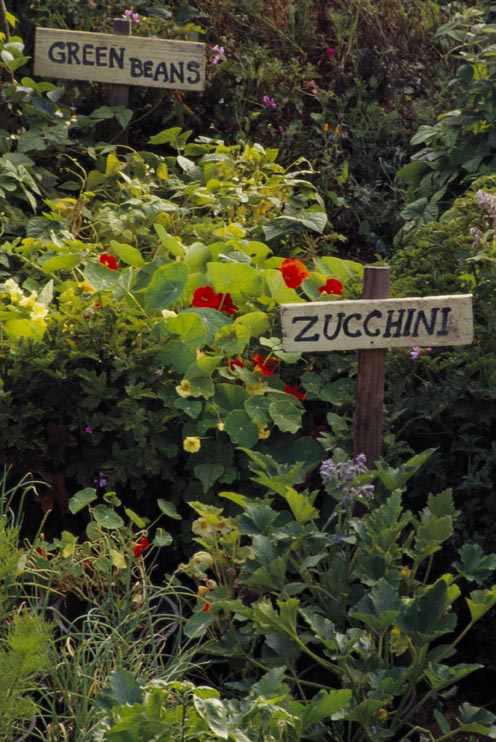Beginner’s Garden Tips
See vegetable growing chart If you’re ready to think about a vegetable garden, remember this — it’s better to be proud of a small garden than to be frustrated by a big one! One of the common errors for beginners is planting too much too soon and way more than anybody could eat or want. […]

If you’re ready to think about a vegetable garden, remember this — it’s better to be proud of a small garden than to be frustrated by a big one!
One of the common errors for beginners is planting too much too soon and way more than anybody could eat or want. Unless you want to have zucchini taking up residence in your attic, plan carefully. Start small.
The Very Basics
Here are some very basic concepts on topics you’ll want to explore further as you become a vegetable gardener extraordinaire:
- Vegetables love the sun. They require six hours (continuous, if possible) of sunlight each day, at least.
- Vegetables must have good, loamy, well-drained soil. Most backyard soil is not perfect and needs a helping hand. Check with your local nursery or county extension office about soil testing, soil types, and soil enrichments.
- Placement is everything. Like humans, vegetables need proper nutrition. A vegetable garden too near a tree will lose its nutrients to the tree’s greedy root system. On the other hand, a garden close to the house will help to discourage wild animals from nibbling away your potential harvest.
- Vegetables need lots of water, at least one inch of water a week. In the early spring, walk around your property to see where the snow melts first, when the sun catches in warm pockets. This will make a difference in how well your vegetables grow.
Deciding How Big
A good-size beginner vegetable garden is 10×16 feet and features crops that are easy to grow. A plot this size, planted as suggested below, can feed a family of four for one summer, with a little extra for canning and freezing (or giving away).
Vegetables that may yield more than one crop per season are beans, beets, carrots, cabbage, kohlrabi, lettuce, radishes, rutabagas, spinach, turnips. For the plan below, your rows should run north and south to take full advantage of the sun.
Leave 2 feet between bush beans, 1/2 foot between bush beans and lettuce, and 1 foot between all of the rest.
Make your garden 11 rows of 10 feet each of the following veggies:
Tomatoes — 5 plants staked
Zucchini squash — 4 plants
Peppers — 6 plants
Cabbage
Bush beans
Lettuce, leaf and/or Bibb
Beets
Carrots
Chard
Radishes
Marigolds, to discourage rabbits!
(Note: If this garden is too large for your needs, you do not have to plant all 11 rows, and you can also make the rows shorter. You can choose the veggies that you’d like to grow!)
TIPS FOR GROWING VEGETABLES
From Yankee‘s sister publication, The Old Farmer’s Almanac


